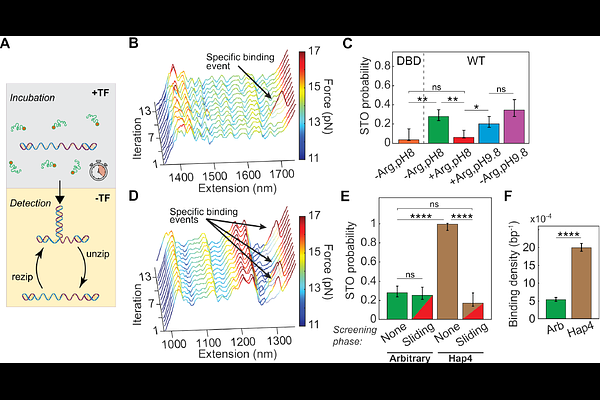Intrinsically disordered regions facilitate Msn2 target search to drive promoter selectivity

Intrinsically disordered regions facilitate Msn2 target search to drive promoter selectivity
Strugo, N.; Burstein, C.; Hossain, S. S.; Nago, N.; Khamis, H.; Kaplan, A.
AbstractTranscription factors (TFs) regulate gene expression by binding specific DNA motifs, yet only a fraction of putative sites is occupied in vivo. Intrinsically disordered regions (IDRs) have emerged as key contributors to promoter selectivity, but the underlying mechanisms remain incompletely understood. Here, we use single-molecule optical tweezers to dissect how IDRs influence DNA binding by Msn2, a yeast stress-response regulator. We show that IDRs facilitate initial non-specific association with DNA and promote one-dimensional diffusion toward target motifs, supported by charge-mediated interactions. Remarkably, the IDR-dependent search mechanism displays sequence sensitivity, with promoter-derived sequences enhancing both initial binding and sliding rates, demonstrating that Msn2-DNA interactions alone are sufficient to confer promoter selectivity in the absence of chromatin or cofactors. These findings provide direct mechanistic evidence for how IDRs tune transcription factor search dynamics and expand sequence recognition beyond canonical motifs, supporting a mechanism for promoter selectivity in complex genomic contexts.